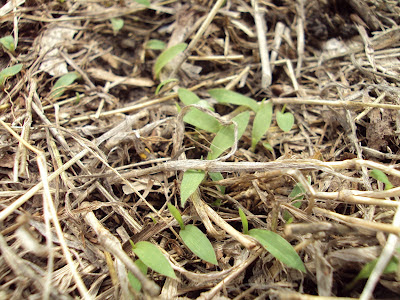Nick Christians
March 23, 2012
The warm weather and the unusually large number of growing degree days (GDD) for late March have led to a lot of concern about early crabgrass germination.
First of all, let me tell you about my experience with this over the past 33 springs in central Iowa. I watch crabgrass germination dates very closely because of my research with preemergence herbicides. I have often been worried about early germination because of warm conditions in March and early April, only to find that cragbrass germinates at about the normal time, around May 1 in the Ames/Des Moines area. This is also true in cooler years when I anticipate late germination may occur later than usual. The germination is still around the normal time.
This year is one of the warmest in my experience and I’ll be watching the situation closely. At the research station we plan to apply applications of Dimension (dithiopyr) and Baracade (prodiamine) separately in test plots on April 1, April 15 and May 1 to determine what kind of crabgrass control we can expect in a warm year like this. I’ll keep you informed of the results as things develop. We will also discuss this work at field day on July 19.
We have had several calls and e-mails in the last few days about emerging crabgrass. I spent March 21 looking for any emerged crabgrass around town and around Veenker golf course. I did not find any. What I am seeing is a common problem at this time of year. Prostrate knotweed (Polygonum aviculare), which is a broadleaf species common in compacted areas around sidewalks and on in the center of sports fields, looks a lot like crabgrass as it emerges. This is one of the earliest germinating weeds in the landscape and is often observed in March and even in late February. While it is a broadleaf, it can look a lot like a grass when it first emerges. It is often mistaken for crabgrass by lawn care customers early in the season. It is a problem for lawn care specialists because the customers will often tell them that they have applied their preemergence herbicide too late. It is not until the leaves begin to mature that it becomes clear that this is a broadleaf and not a grass.
While I found knotweed everywhere I looked on the 21st, I did not see any crabgrass, even on bare soil on southern exposers where the crabgrass usually emerges first.
I did notice some interesting things about the knotweed. While this species is considered to be an annual in this location, it does appear that some of the runners may not have died during the unusually warm conditions this winter and that leaves were emerging from the runners. That is very unusual. I'm not quit sure of this yet and I will continue to watch this development over the next couple of weeks.
The picture below is of knowtweeed germinating from seed in March.

A close up of the plants shows that it is clearly not crabgrass, but it
does look like crabgrass from a distance.

I also saw quite a bit of annual bluegrass (Poa annua) which usually germinates in fall, but which can germinate in spring. This species can also be mistaken for emerging crabgrass.

The last picture is of an annual broadlef that looks so much like crabgrass that it fooled me when I first saw it. Its texture and color and size exactly matched germinating crabgrass. The main difference is that the leaves are rounded on the end, whereas crabgrass will have more of a pointed leaf tip. I can see how people are easily fooled by these seedlings at this stage, however. I think that these emerging plants are knowtweed, but they are a little different and I'm going to continue to watch them over the next few weeks. If it turns out to be another species, I will let you know in a future blog.

So, what am I recommending as far as the best time to apply preemergence herbicides this spring?
I am currently telling people to go about two weeks earlier than they normally would. If you are used to getting them down by May 1, try to get them down by April 15. The timing will be later in Northern Iowa and earlier in Southern Iowa.
Dithiopyr (Dimension) has some post activity on newly germinated crabgrass and if you have to go later, that may be your best product.
If people call me on May 1 and ask if they should still treat, I'm going to tell them yes. I'm still betting that crabgrass germination will occur close to its normal time.










